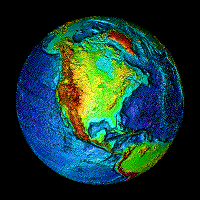WILD FACTS SERIES
Ice and Snow
Humans are in a great hurry to cancel their life insurance policy with nature, melting the snow and ice. As a result of climate change, mountain snow and glaciers are melting earlier, in the spring instead of summer, resulting in water scarcity during the hotter summer months when the precious water is most needed.

Perito Moreno Glacier, Patagonia, Argentina This file is licensed under the Creative Commons Attribution ShareAlike 2.5 (Image credit: Luca Galuzzi via wikimedia commons)
“This is just a time bomb,” said hydrologist Wouter Buytaert at a meeting of geoscientists in Vienna.
Areas most at risk from water shortages include the United States, South America, Australia, the Middle East, southern Africa, and the Mediterranean.
The most vulnerable places are earth’s sub-tropic zones, where 70 percent of the world’s population live. Report
The following information is mirrored from the USGS Webpage
Ice caps influence the weather
Just because water in an ice cap or glacier is not moving does not mean that it does not have a direct effect on other aspects of the water cycle and the weather. Ice is very white, and since white reflects sunlight (and thus, heat), large ice fields can determine weather patterns. Air temperatures can be higher a mile above ice caps than at the surface, and wind patterns, which affect weather systems, can be dramatic around ice-covered landscapes.
Some glacier and ice cap facts

- Glacial ice covers 10-11 percent of all land.
- According to the National Snow and Ice Data Center (NSIDC), if all glaciers melted today the seas would rise about 230 feet (70 meters).
- During the last ice age (when glaciers covered more land area than today) the sea level was about 400 feet (122 meters) lower than it is today. At that time, glaciers covered almost one-third of the land.
- During the last warm spell, 125,000 years ago, the seas were about 18 feet (5.5 meters) higher than they are today. About three million years ago the seas could have been up to 165 feet (50.3 meters) higher.
- Largest surface area of any glacier in the contiguous United States: Emmons Glacier, Washington (4.3 square miles or 11 square kilometers)
ice caps and global water distribution
 Even though the amount of water locked up in glaciers and ice caps is a small percentage of all water on (and in) the Earth, it represents a large percentage of the world’s total freshwater. As these charts and the data table show, the amount of water locked up in ice and snow is only about 1.7 percent of all water on Earth, but the majority of total freshwater on Earth, about 68.7 percent, is held in ice caps and glaciers.
Even though the amount of water locked up in glaciers and ice caps is a small percentage of all water on (and in) the Earth, it represents a large percentage of the world’s total freshwater. As these charts and the data table show, the amount of water locked up in ice and snow is only about 1.7 percent of all water on Earth, but the majority of total freshwater on Earth, about 68.7 percent, is held in ice caps and glaciers.
One estimate of global water distribution
| Water source |
Water volume, in cubic miles |
Water volume, in cubic kilometers |
Percent of total water |
Percent of total freshwater |
| Ice caps, Glaciers, & Permanent snow |
5,773,000 |
24,064,000 |
1.7% |
68.7% |
| Total global freshwater |
8,404,000 |
35,030,000 |
2.5% |
— |
| Total global water |
332,500,000 |
1,386,000,000 |
— |
— |
| Source: Gleick, P. H., 1996: Water resources. In Encyclopedia of Climate and Weather, ed. by S. H. Schneider, Oxford University Press, New York, vol. 2, pp.817-823. |
Related Links:



 Even though the amount of water locked up in glaciers and ice caps is a small percentage of all water on (and in) the Earth, it represents a large percentage of the world’s total freshwater. As these charts and the data table show, the amount of water locked up in ice and snow is only about 1.7 percent of all water on Earth, but the majority of total freshwater on Earth, about 68.7 percent, is held in ice caps and glaciers.
Even though the amount of water locked up in glaciers and ice caps is a small percentage of all water on (and in) the Earth, it represents a large percentage of the world’s total freshwater. As these charts and the data table show, the amount of water locked up in ice and snow is only about 1.7 percent of all water on Earth, but the majority of total freshwater on Earth, about 68.7 percent, is held in ice caps and glaciers.